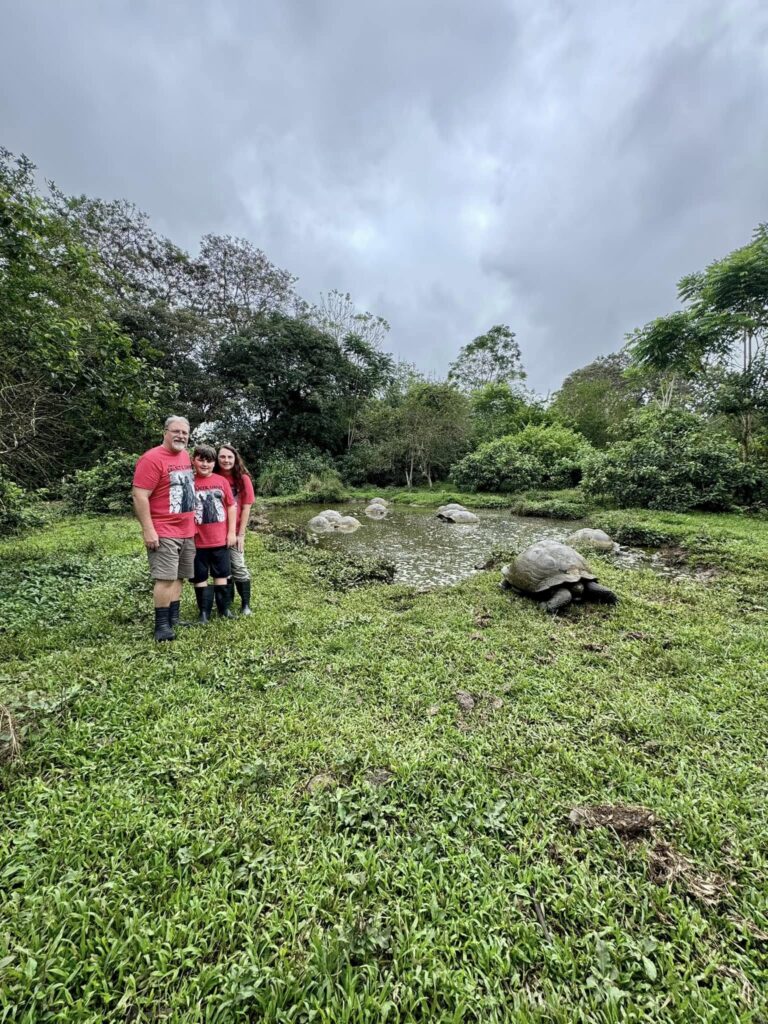We recognize that Disney vacations are not just an investment, but often the highlights of our lives, and we take that responsibility seriously. We want to ensure you have the best vacation experience.
Interested in a job in travel? Click here to learn: How to Become a Disney Travel Agent
Overview
Introduction
Ecuador is not a typical travel destination and it is not for everyone, but for the seasoned traveler looking to dabble in the mysteries of South America, Ecuador is a wonderful introduction.
You can go from the balmy Pacific Coast to the high mountains to a remote corner of the jungle all in one day, but don't plan on rushing through Ecuador.
You'll need some time to appreciate the remarkable collection of landscapes, animals, plants and people that are found in each part of the country. You'll also find that the transportation system, as well as the conditions of the roads, often prevent you from rushing anywhere.
The most remarkable species of birds and animals are found on the Galapagos Islands, which lie more than 600 mi/1,000 km offshore. They include marine iguanas, giant tortoises, sea lions, blue- and red-footed boobies, pelicans and even a few penguins—these island residents inspired Charles Darwin to propose his theory of evolution.
Back on the mainland, the Andes Mountains (also known as the Sierra) are home to the capital city, Quito, and the UNESCO World Heritage site Cuenca, which has some of the finest colonial architecture in the Americas. The mountains are a sight in themselves—two chains of snowcapped peaks known as the Avenue of the Volcanoes (a name coined by the great German naturalist and explorer Alexander von Humboldt). In the smaller towns and villages of the Sierra, you'll see the descendants of Inca peoples, many of whom wear distinctive clothing and hats that identify them as residents of a particular area.
East of the Andes is the Amazon basin (or the Oriente). This interior jungle region, cut through with rivers and streams, ranks among the most accessible in South America and offers excellent opportunities to see the flora and fauna of the rain forest and to visit Amazonian tribes. West of the Andes are the coastal lowlands and Ecuador's largest city, the port of Guayaquil. The area is very hot and humid most of the year. Ecuadorians flock to the beaches of the Pacific coast, but these aren't as attractive or interesting to foreign visitors as are the Sierra and the Oriente.
Must See or Do
Sights—Fine colonial architecture in Quito; fascinating wildlife on the Galapagos Islands; the world's highest active volcano at Cotopaxi National Park; Market day in Otavalo; impressive ruins at Ingapirca; the tropical rain forest in El Oriente; the equator at the Mitad del Mundo complex; the colonial city of Cuenca, a UNESCO World Heritage site; the malecon at Guayaquil.
Museums—Archaeological exhibits at Museo del Banco Central and religious art at Museo de Las Conceptas, both in Cuenca; Museo Guayasamin; first-class exhibits at the Museum of Anthropology and Contemporary Art in Guayaquil; learn local history in a fascinating way at the Museo en Miniatura along the Malelcon in Guayaquil; Museo de Arte Colonial and the Museo Municipal Abert Mena Caamano in Quito; Quito's social history at the Museo de la Ciudad; the Solar Museum and Museo Etnografico at the Mitad del Mundo complex.
Memorable Meals—Go to the edge of Ecuador and sip and sup at Cocteles del Paraiso in Engabao; enjoy the views and a meal at Pim's, located on top of El Panecillo, with panoramas of Quito's Old Town and the Avenue of Volcanoes; enjoy a farm fresh meal with dessert made from chocolate grown on the trees surrounding you with a tour of working cacao farm outside of Guayaquil; Roast cuy (guinea pig), locro (cheese and potato soup, topped with avocado), llapingachos (mashed potato and cheese fritters) or humitas (cornmeal tamales) from anywhere that sells these local specialties; ceviche (raw seafood marinated in lime juice and chili) from a good cevicheria; encocados (fish in coconut milk with tomato and garlic); higos con queso (candied figs with cheese), a sweet dessert.
Late Night—A colorful folkloric show titled Jacchigua at the Casa de la Cultura in Quito; lively bars and restaurants around the Plaza Foch in the Mariscal in Quito. Late night jungle walk in the Amazon hunting for insects and spiders by flashlight.
Walks—Hiking the trails in the hills above Banos; a stroll along the Malecon 2000 in Guayaquil; bird-watching in the areas surrounding Santo Domingo De Los Colorados or Mindo; walking tours of Quito's Old Town or Cuenca; the Inca Trail to Ingapirca.
Geography
Ecuador is located on the equator on the northwest coast of South America, bordered by the Pacific to the west, Colombia to the north and Peru to the south and east. The fourth-smallest country on the South American continent, Ecuador encompasses four distinct regions: the Oriente (covers half the country and is a region of thick tropical forests in the eastern foothills of the Andes and is part of the Amazon River Basin), the Costa (flat plains along the Pacific coast), the Sierra (Andes Mountains and highland areas that cover about a fourth of the country) and the Galapagos Islands, (an archipelago of islands which lie about 600 mi/1,000 km off the coast). The capital, Quito, is 9,200 ft/2,800 m above sea level on the Sierra plateau.
History
Ecuador's cultural heritage is as impressive as its physical beauty. The nation was part of the Inca empire until it fell to the Spanish conquistadors in 1534. In that same year, the Inca Ruminahui razed Quito to keep it from being captured by the invaders.
Refounded as the colonial capital, Quito became famous in the 17th and 18th centuries as a center for the arts—some of the finest examples of Spanish colonial architecture, sculpture and paintings were produced in Ecuador at that time. The colonial center's beauty and rich legacy were recognized when it was designated a UNESCO World Heritage site in 1978.
Like the rest of South America, Ecuador underwent a period of turmoil as it attempted to cast off Spanish rule in the early 1800s. Independence was won by the armies of Simon Bolivar, with the key battles in Ecuador being won by Antonio Jose de Sucre, one of Bolivar's field marshals. (Ecuador's former currency was named in honor of Sucre.)
After forming an unsuccessful federation with Colombia and Venezuela, Ecuador became an independent nation in 1830 and began the long, difficult road toward political stability. During this period, there wasn't much job security in being leader of Ecuador. In the first 95 years of independence (1822-1917), Ecuador had 40 presidents, dictators and juntas, and from 1925 to 1948, none of the 22 presidents or chiefs of state completed his term.
In 1942, as the result of a war with Peru, Ecuador lost a significant portion of its Amazon Basin territory. After numerous battles, a peace was finally negotiated in late 1998 that eased tensions along the border. Ecuador's bad luck with its leaders continued, however—it has some of the most exiled ex-presidents.
Despite high oil prices and abandoning their currency for the U.S. dollar, the majority of Ecuadorians remain in poverty. Huge numbers have emigrated—chiefly to the U.S. and Spain. Revenues sent home from abroad constitute the country's third- or fourth-highest foreign-exchange earner (along with bananas, oil and tourism). Ecuador's indigenous political parties have risen to the forefront of national politics and will continue to be a source of tensions in the future, as will events in the country's troubled neighbor to the north, Colombia.
Leftist Rafael Correra won the presidency in 2006. He declared Ecuador's foreign debt "illegitimate," but continued paying it off under greatly reduced terms. In 2009, backed by a revised constitution, the popular Correra won a second term by a wide margin, and then a third. His administration—despite much political infighting—succeeded in reducing Ecuador's perennially high levels of poverty, indigence and unemployment. Correra's successor, Lenin Moreno, a Centrist, was elected in 2017 and served until 2021, followed by the country's first right-wing president in 20 years, Guillermo Lasso. Political backlash has followed. Strikes organized by disgruntled protestors can cause problems with travel, so it is best to stay up-to-date with local news.
Snapshot
Ecuador's chief attractions include the incredible flora and fauna of the Amazon rain forest and the Galapagos Islands, colonial architecture, cathedrals, museums, Inca treasures, world-renowned birding, thermal springs, the Andes, volcanoes, handicraft and food markets, local gastronomy, colorful festivals and parades, traditional folk music, hiking, mountain climbing, mountain biking, rafting and other adventure sports, and beaches.
Ecuador is a wonderful destination for travelers who are interested in the outdoors and nature-related activities. (For many nature lovers, a trip to the Galapagos is a pilgrimage.) Those who wish to visit the coast, the high mountains and the rain forest will find them very near one another. The country is not for those who expect a wide range of deluxe conveniences or who are upset by delays and last-minute schedule changes. Travelers who have trouble with high altitudes should be careful when traveling through the Andes (or avoid them altogether), and those with respiratory problems may have problems with air pollution in Quito. Additionally, people with limited mobility will find Ecuador's infrastructure very frustrating, without assistance.
Potpourri
Contrary to the popular myth promoted in jungle and horror movies, you can safely swim in rivers where there are piranha. The carnivorous fish are not nearly as aggressive as they are portrayed on the screen and rarely attack something that isn't already bleeding.
The line on the pavement at the Mitad del Mundo (Center of the World) complex is not the actual equator. Several monuments have marked it, the most recent being the 90-ft-/30-m-tall monolith with a gigantic globe on top of it. But GPS measurements have determined it's just a bit off the mark.
As lush as the rain forest is, its soil is only about 4 in/10 cm deep. When cleared of trees, the soil washes away within a year, and the remaining terrain is devoid of nutrition.
You are unlikely to find two groups of the same species of flora or fauna close to each other in the rain forest. If you come across a mahogany tree or a troop of monkeys, chances are the next tree or troop is at least a mile/kilometer away.
Ecuador was the first country in South America to adopt the U.S. dollar as its official currency.
Native Ecuadorian chocolate makes culinary headlines for its unique flavor and exceptional quality. Known as the Arriba Nacional variety of cacao, it is distinguishable from other cacao by its bright yellow pod, A mass produced cacao pod is red in color. The bean to bar movement and the desire for single origin chocolate has saved the Arriba bean and put Ecuador on the map as a chocolate lovers destination.
Chimborazo Volcano, though not the highest mountain in the world, is the point farthest from the center of the Earth (it's because the planet bulges slightly at the equator) and thus said to be the closest spot on Earth to the sun.
All citizens in Ecuador ages 18-65 are required by law to vote. Ecuadorians who do not fulfill this obligation cannot get passports to leave the country and even cannot complete certain bank transactions.
































